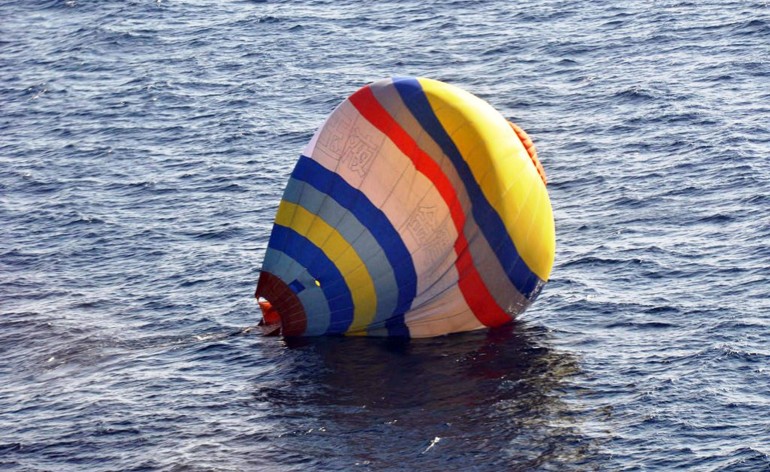China asked Japan not to snatch Senkakus hot air balloonist
Beijing asked Tokyo not to arrest a Chinese man who attempted to land on the Senkaku Islands in a hot air balloon on New Year’s Day and had to be rescued by the Japan Coast Guard in nearby waters, sources familiar with the situation revealed Saturday.
The Chinese government made the request believing the man’s arrest or detention by Japanese authorities could cause irreparable harm to bilateral relations, which are already tense over the Japan-held Senkakus, the sources said. China and Taiwan both claim the islet chain in the East China Sea as part of their respective territories.
The incident took place just six days after Prime Minister Shinzo Abe controversially visited war-related Yasukuni Shrine, further aggravating Sino-Japanese ties.
After receiving a call from Taiwanese authorities to search for a missing person, the Japan Coast Guard located the man, 35, and the balloon in Japanese territorial waters near the Senkakus at around 4:15 p.m. on the day of the incident.
The man, a cook from Hebei Province, was handed over to a Chinese patrol ship around 7:50 p.m. the same day after Beijing asked Tokyo through several diplomatic channels not to detain him, according to the sources.
The coast guard did not pursue criminal charges against the man for intruding into Japan’s territorial waters, saying the exact point of his attempted landing on the islets could not be determined.
Tokyo has kept the Chinese request secret. The decision not to pursue criminal charges against the balloonist was interpreted in some quarters as political and most likely due to influence from the Prime Minister’s Office.
After his rescue, the man told the coast guard that he had taken off from Fujian province with the aim of landing on one of the Senkaku islets, which China refers to as Diaoyu and Taiwan as Tiaoyutai.
Before setting off, the man had criticized Abe’s Yasukuni pilgrimage on the leading Chinese microblog site Sina Weibo and said his hot air balloon caper was aimed at demonstrating China’s sovereignty over the uninhabited islets.
But the Chinese side compromised on his hand over by suggesting it take place outside Japanese territorial waters and displaying no intention of sending government ships into the surrounding area, as it often does, the sources said.
The hand over was carried out just outside Japan’s territorial waters and Beijing expressed its gratitude for the rescue operation, according to the coast guard.
After the incident, Chinese Foreign Ministry spokesman Qin Gang stressed at a news conference in Beijing that the man was “just a balloon enthusiast.”
In apparent consideration of Chinese public opinion, Qin also claimed he had been rescued by the Chinese Coast Guard. Beijing also concealed the fact that the man set out with the clear objective of landing on the Senkakus to avoid bolstering Japan’s current jurisdiction over them.
Dealing with incidents around the Senkakus is sensitive for both countries, as the islets have become intensely politicized since Japan’s effective nationalization of them in September 2012.
Regarding the hot air balloon case, it is likely that officials of the two countries wanted to avoid a recurrence of a September 2010 incident in which a Chinese trawler collided with Japanese cutters off the Senkakus and provoked a political standoff, the sources said.
On that occasion, Japanese authorities arrested the Chinese captain on suspicion of intentionally causing the collisions. He was later released following repeated calls by Beijing and out of consideration for bilateral relations.
A Japan Coast Guard official who was angered by China’s claim that the captain’s arrest had been illegal, and by what he perceived as Tokyo’s concealing of the truth, later leaked confidential and detailed video footage shot of the collisions on the Internet.
via The Japan Times.





